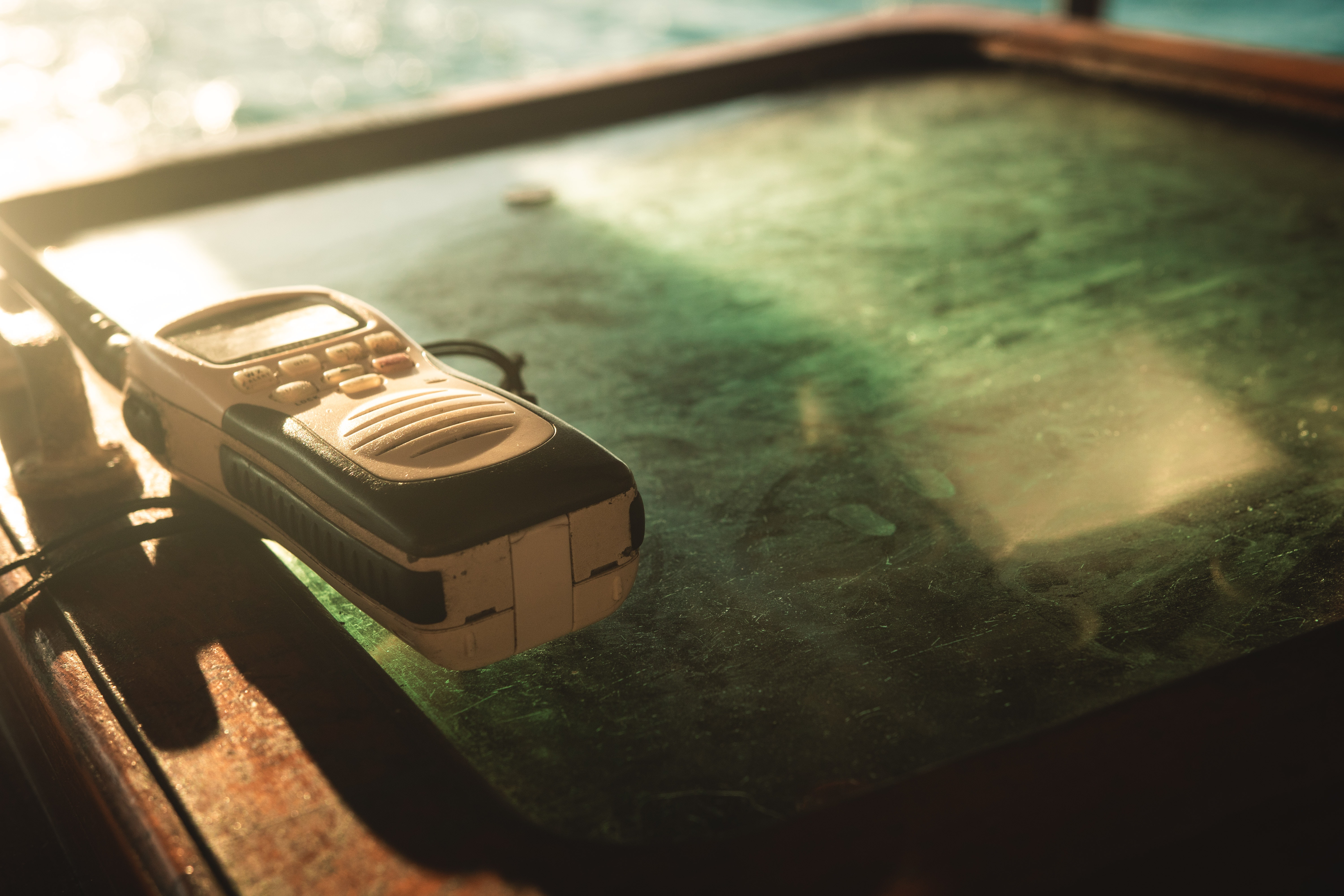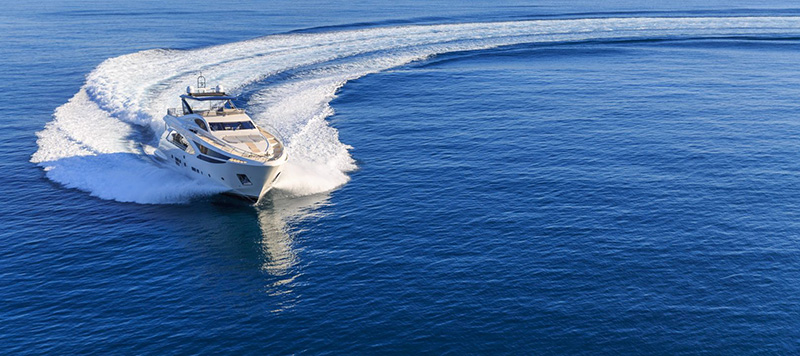The Questions About VHF Radio Answered
VHF radios and their appropriate use comes in handy when communicating with other ships, bridges, and marinas, seeking clearance, especially during emergencies. There is a myriad of questions surrounding the ownership and use of VHF radios, like what VHF radio stands for, how VHF radio works, how to install VHF radio on a boat, and what marine radio channel should I use, among many others. Seeking answers to these questions is a quick way to get a rounded knowledge about VHF radios and their use. And in this article, we have provided answers to some of the commonly asked questions about VHF radios.What does VHF radio stand for?
VHF is a term popular with radio and television transmissions, and it means Very High Frequency. Any magnetic radio wave that has a frequency between 30 and 300 megahertz (MHz), and its wavelength between 1 and 10 meters is regarded as a VHF. VHFs are used for line-of-sight (LOS) communications, such as radio and television broadcasting, electronic navigation systems, and short-range communications. Its usage limit is largely because they are not well reflected in the atmosphere. It does not bend around the earth's curvature and can only be transmitted about 160km beyond the horizon.How does VHF radio work?
Understanding how VHF radio works will help you understand the concept of VHF better. VHF radio works by transmitting a line of sight signal that receivers can pick up. The receivers pick the strongest signal they receive, and communication happens. Transmitting the waves is done in a straight line, and as it travels along the straight line, the strength weakens, making it harder for other receivers to detect the sound. If there are multiple sound sources, receivers pick the one with the strongest signal. Obstructions like mountains and landmass usually dampen these radio waves that travel around the line of sight.
What are the common use cases of VHFs?
VHF use cases include Digital Audio Broadcasting (DAB), television broadcasting, FM radio broadcasting, long-range data communication with radio modems, and marine radios. VHF marine radio in vessels is used for instant communication with bridges, marinas, other boats, and the coast guards. They are not needed in recreational boats and boats less than 65.5 feet in length as recommended by the government. However, they may be installed for safety purposes. VHF radios in boats are multifunctional, making them better than smartphones.Where can I get a VHF marine radio?
You can get a VHF radio at a marine supply store. Typically, you will get a number of varieties to suit your needs and preferences. You will have several choices, each with different specifications and power ratings, depending on your vessel.What marine radio do I need?
Your ideal choice of marine radio depends on several factors like the type of vessel you need it for, power options, ease of use, waterproofing, ATIS programmable, and active noise cancellation features.- The type of vessel you need it for: If you need it for a large marine vessel like a yacht, or a large motorboat, you can consider using several Raymarine VHF radios. For smaller water vessels lacking in space like a paddleboat, jet skis, or kayaks, handheld variants are recommended.
- Power options: If you have power onboard, then fixed marine radios are ideal, provided you have the space for them. Smaller water vessels with no power or space can opt for handheld devices. The handheld devices should be equipped with one-use or rechargeable batteries that can last a whole day on a single charge.

- Ease of use: Choose a marine radio that fits your technical know-how level and allows for easy use. Choose one with a simple interface that is easy to operate, especially in an emergency.
- Waterproofing: Marine radios are used in open waters most of the time, and it helps if it is water resistant. The more water resistant the radio is, the better it is. Some radios are splash resistant with an IPX4 rating, while others are resistant to submerging, with IPX7 ratings or more.
- ATIS programmable: An automatic Transmitter Identification System (ATIS) is a requirement for sailing outside the continent. If you have a large water vessel and plan to take trips across continents, ensure to get VHF radios that are ATIS programmable.
- Noise cancellation: Boats can be noisy to operate, causing difficulty when using VHF radios. VHF radios with active noise cancellation are easier to use, as they can transmit your voice clearly without background noise.
What marine radio channel should I use?
When setting out in the open waters, you should be aware of the marine radio channel that are open for use. You want to stay on guard in case of an emergency. There are about 57 VHF channels in the UK. Channels M and M2 are private channels and used by yacht clubs and marinas. Channel 00 is also a private channel for HMCG use only. The primary internship channels are channel 6, 8, 9, 10, 13, 15, 17, 67, 69, 72, 73, and 77. Channels 6, 10, 67, and 73 are dedicated for SAR operations. Channel 16 is set aside for international distress call. Channel 80 is the normal channel for marinas in the UK. If you want to communicate with the UK coast guard, use channels 62, 63, or 64. Other channels are for bridge-to-bridge working, public correspondence, and port operations. Also, it is important to only use the radio when necessary to avoid congestion on the radio lines.
How to do a VHF radio check?
A VHF radio on a boat can be a lifesaver and can make a difference between being stranded at sea or being saved. Before setting out in the open, you must perform a radio check to ensure it works properly. How to do a VHF radio check is a survival skill taught to everyone who wants to venture out into open waters. To do a VHF radio check, select an open channel. With your microphone held at 90 degrees to your face, speak clearly and slowly into your microphone by calling "radio check" three times, then the name of your boat and where you are. Wait for a response to ensure that someone heard you. Note that you may use only open channels for a radio check.How to install a VHF radio on the boat?
Installing a VHF radio on your boat is a simple procedure, provided you have the right directions. The installation process has three main parts: the receiver, the antennae, and the power source.- The receiver: The receiver comes with a wall bracket that holds it in place. It should be placed in a relatively dry place and away from engine noise. The wall bracket has holes you should trace out, and using the bolts, nuts, and washer available in the pack, fasten it to the vessel wall.
- The antenna: The antenna comes with its bracket, and you should fix it in the highest location possible, away from electrical components that can cause interference. The holes on the bracket should guide in drilling holes. After drilling holes in the boat, use the screws provided to attach the bracket and secure the antennae with the bracket. Plug in the cable and neatly extend it to the already attached receiver.
 The power source: The radio comes with two power cables, red and black, which will be attached to the power source. If possible, the power cables should be attached directly to the battery, with the red going to the positive terminal and the black to the negative. After connecting the power source, put the antenna cable in its designated place and bolt your transmitter onto the bracket, and it is set for use. These are the few steps on how to install a VHF radio on a boat.
The power source: The radio comes with two power cables, red and black, which will be attached to the power source. If possible, the power cables should be attached directly to the battery, with the red going to the positive terminal and the black to the negative. After connecting the power source, put the antenna cable in its designated place and bolt your transmitter onto the bracket, and it is set for use. These are the few steps on how to install a VHF radio on a boat.
How far can a VHF radio transmit?
The distance a VHF radio can transmit is relative. From the point of origin, a VHF radio can blast waves that can be picked up within a 60-mile radius, depending on factors such as the antenna, the signal strength, signal type, and obstructions. Bigger water vessels with fixed radios and a highly placed antenna can communicate over long distances, while smaller handheld devices have a smaller range. When purchasing a VHF radio, ensure to check its possible transmission distance.

